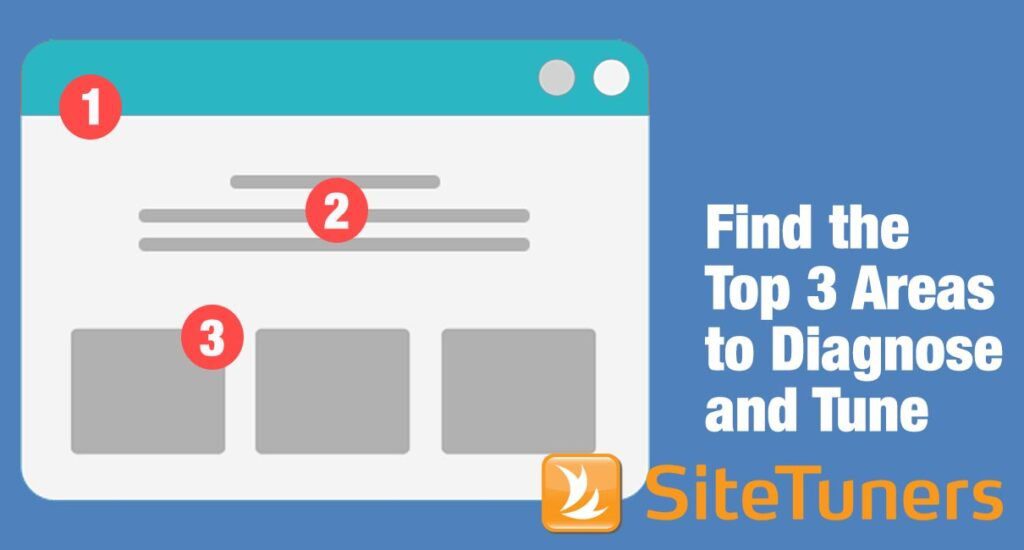 In the last of our 12 days of LPO tips, SiteTuners takes you through the common testing myths and pitfalls – and help you get started tuning your web site.
In the last of our 12 days of LPO tips, SiteTuners takes you through the common testing myths and pitfalls – and help you get started tuning your web site.
Say you already have the fundamentals down.
You have a model to follow. You know what types of beasts your landing pages are, and the conversions (plural form intentional) each can lead to. You have a basic understanding of your users, and know how to get structured, predictable traffic to run tests on, as well as the basic motivations of users throughout their decision process.
You know how to hunt for problem areas, how to optimize for best usability practices, how to find the appropriate testing methods, how to prioritize tests and how to report results correctly at confidence levels.
You have all the tools to run, judge, and report on usability tests. If you think you’re home free, you’re probably wrong.
The next hurdles are less about the toolsets and skills, and more about technology and culture. Maybe the company believes testing hurts search engine optimization. Maybe it’s tough getting buy-in from the right people. Maybe planning is not your organization’s strong suit. Maybe people want results in too tight a timeframe, and you will not get enough baseline data. Chances are, some of the problems you will encounter are specific enough that even if you’re smart, tech savvy, and math inclined, the challenges will still be tough to overcome. We’ll try and tackle common gripes and testing myths to help you get started.
Myth 1: Testing Hurts Search Engine Optimization (SEO)
There are a few testing factors that can affect SEO, and ultimately, your visitor acquisition. If the fear is about the scripts, there are a range of testing tools that are safe for Google spiders (as well as spiders from other search engines). If the fear is about the redirects (search engine spammers try to get pages to rank, and then send traffic to unrelated channels that pay out – this is a “blackhat” technique that Google and other search engines punish) there are best practices to follow like keeping the challenger page or pages about the same topic, and installing a new champion page at the end of the test.
The thing to remember is that Google itself runs thousands of tests, and encourages webmasters to run tests, before with Google Website Optimizer, and today with Content Experiments on Google Analytics.
Myth 2: All Conversions are Created Equal
Some conversions are for the early stages of the purchasing cycle. Maybe you need to get a download wide reach for branding and industry leadership. Maybe you just need the visitor’s email (HINT: don’t use a “submit” button). Some occur closer to the end. Maybe you have a free trial. Some conversions are direct sales, and some direct sales lend themselves to upsell opportunities. All of these are conversion points, and maybe what you need isn’t the total number of conversions. It may not even be the value of the sale. If you have the data, you can model against the average lifetime value of a transaction, but at a minimum, you need to keep track of all the actions that lead to profit at all stages of the cycle.
Myth 3: Testing has No Costs
Of course, testing has costs. Even if you have all the expertise in-house so you’re not paying an agency to design, run, and analyze tests, you still need to weigh the time spent on this against other initiatives. Testing, when done right, requires several members of different departments to become a usability team. Similarly, unless your site is fundamentally flawed, not all tests will yield positive results – a challenger page may decrease your conversions for a given time.
The argument for testing isn’t that it’s free; the argument is that right now, if you’re not testing, you’re already leaving money on the table.
That’s it. We hope the 12 days of LPO helps you lay the groundwork for testing, and even more importantly, that you get started on tuning your site. We divided the posts into three main themes for easier consumption. Here are the posts once again.
Fundamentals of conversion: before you begin
1. Go Beyond the Conversion with the Online Optimization Model
2. It’s Not Conversion, It’s Conversions. Plural.
3. You Are Wrong About Your Users
4. Do You Understand the User’s Decision Process?
Diagnosis and testing: find what’s broken, and test
5. Find the Top 3 Areas to Diagnose and Tune
6. Nobody Reads Your Page
7. Prioritize Your Tests and Design for Maximum Impact
8. Automate Your A/B Test Processing for High Confidence Results
9. Stop Leaving Money on the Table by Finding the Right Tuning Methods
It’s on you: instill a culture of testing
10. Assemble the Right Usability Team
11. Reduce Risks from Unknowns by Completing Your Testing Action Plan
12. Debunk Myths and Get Testing
Take your conversions to the next level.Learn how our experts at SiteTuners can help kickstart your conversion rate optimization process or get better results from your CRO efforts. Give us 30 minutes, and we’ll show you a roadmap to your digital growth! |


